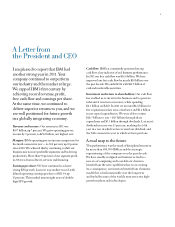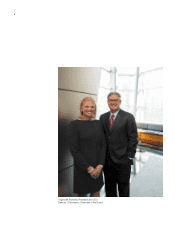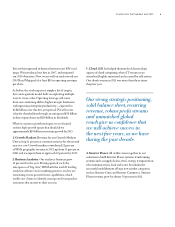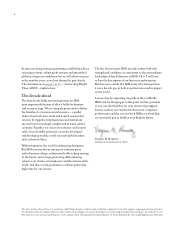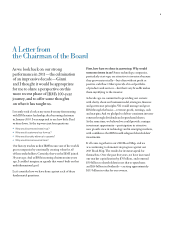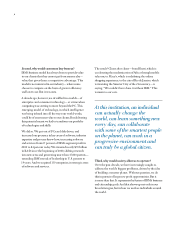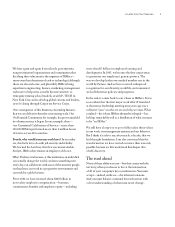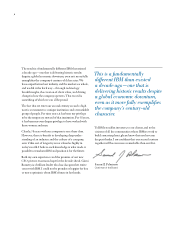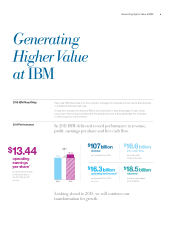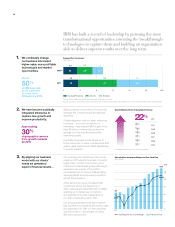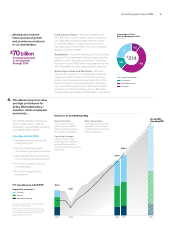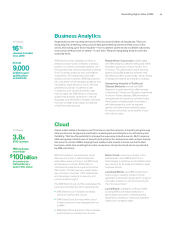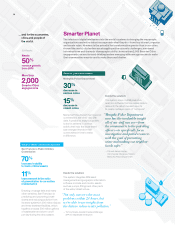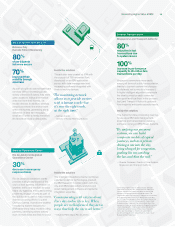IBM 2011 Annual Report Download - page 8
Download and view the complete annual report
Please find page 8 of the 2011 IBM annual report below. You can navigate through the pages in the report by either clicking on the pages listed below, or by using the keyword search tool below to find specific information within the annual report.
6
Second, why would customers buy from us?
IBM’s business model has always been to provide value
to our clients that they cannot get from anyone else
—
value that gives them a competitive advantage. This
model is not universal in our industry
—
where some
choose to compete on the basis of greater efciency
and lower cost. But it was ours.
A decade ago, however, we straddled two worlds
—
of
enterprise and consumer technology
—
at a time when
computing was starting to move beyond the PC. This
emerging model of technology, in which intelligence
was being infused into all the ways our world works,
could be of enormous value to our clients. But delivering
this potential meant we had to transform our portfolio
of technologies and skills.
We did so. We got out of PCs and disk drives, and
increased our presence in key areas of software, industry
expertise and process know-how, increasing software
and services from 65 percent of IBM’s segment prot in
2000 to 84 percent today. We invested nearly $70 billion
in R&D since the beginning of 2000, shifting research
into new areas and generating more than 47,000 patents
—
extending IBM’s streak of leadership in U.S. patents to
19 years. And we acquired 130 companies, in strategic areas
of software and services.
The result? Client after client
—
from Bharti, which is
accelerating the modernization of Africa through mobile
telecom; to Macy’s, which is redening the online
shopping experience; to the city of Rio de Janeiro, which
is inventing the Smarter City of the 21st century
—
is
saying, “We couldn’t have done it without IBM.” This
is music to our ears.
At this institution, an individual
can actually change the
world, can learn something new
every day, can collaborate
with some of the smartest people
on the planet, can work in a
progressive environment and
can truly be a global citizen.
Third, why would society allow us to operate?
Over the past decade, we have increasingly sought to
address the world’s biggest problems, driven by the idea
of building a smarter planet. Without question, we do
this in pursuit of large new prot opportunities. But it
is more than that. It represents the fusion of IBM’s business
and citizenship goals. And that shows up not only in our
broad strategies, but in how we work as individuals around
the world.



